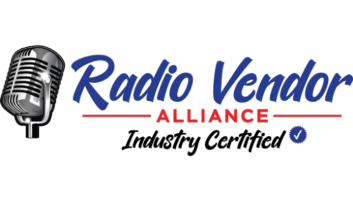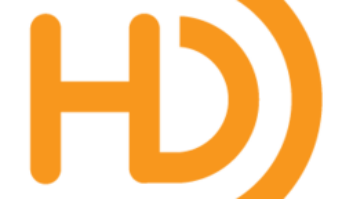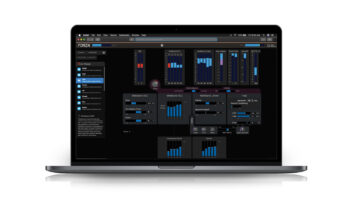At its launch a year ago, members of the HD Digital Radio Alliance — most of them commercial radio group operators — said they had set out to accomplish three things: increase consumer awareness of HD Radio, find ways to accelerate consumer demand and look for ways to help the distribution of HD Radio through retail, automotive and online avenues. Attaining these goals, members believed, would help lower prices for IBOC receivers.
The alliance believes it is making progress on all three fronts. Yet it realizes there’s much to be done to facilitate the HD-R rollout.
As the alliance turns one year old, RadioShack is offering its Accurian tabletop HD Radio at $199, with a net price of $174.99 after rebate. Alliance President/CEO Peter Ferrara calls the $199 a “tipping point” at which receiver makers will sell not thousands of units, but “hundreds of thousands.”
Ferrara says manufacturers have provided him with anecdotal sales information about HD Radio, rather than hard numbers, presumably to avoid giving competitors their sales figures. Asked by Radio World how the RadioShack Accurian sold at a special $99 price at Thanksgiving, Ferrara said the retailer was “overwhelmed by the sales. They oversold the radios in virtually every market where they have rolled it out.”
The alliance has renewed its charter; member companies have increased their commitment to $250 million worth of advertising support in 2007, a $50 million increase over 2006. The bulk of that figure is in radio advertising inventory that will be used to support HD Radio.
The alliance will focus much of its efforts on the automotive chain this year. As RW has reported, up to nine automakers have committed to offer HD Radio in a total of 49 luxury models in 2008 models; those vehicles will be available later this year.
To bridge the gap between aftermarket and OEM availability, HD-R car converters are coming on the market this month. These devices promise to convert nearly any in-dash receiver — as well as satellite radio — to HD-R.
More than 1,000 stations are broadcasting in analog and digital and more than 500 are multicasting as the alliance enters 2007. There are approximately 13,750 licensed stations in the country, not counting LPFMs.
The alliance still needs to smooth out the consumer experience. While achieving a receiver price drop, product availability and retailer sales knowledge about HD-R products appear to be hit or miss, according to numerous readers. While some store sales personnel are helpful and knowledgeable, others are not.
Ferrara acknowledges that each store “has to take the initiative to make it [HD-R] a priority and it’s something we just have to keep banging on.”
The alliance has urged station personnel to help retailers. As an example, some engineers report they have helped RadioShack managers place the Accurian in a better position to receive a signal in stores and explained the technology to store personnel.
Radio World News Editor/Washington Bureau Chief Leslie Stimson spoke with Ferrara about the alliance marketing plans for 2007.
RW: How will the alliance spend the equivalent of $250 million in 2007?
Ferrara: In 2007, we really want to be much more proactive on the automotive industry side and try to accomplish the same types of successes there that we’re able to do on the device and retail side [last] year. Having said that, we will continue to be opportunistic and reactive based on what comes before us.
It’s a bifurcated strategy, one we want to put an added emphasis on the automotive industry, OEM, on the HD Radio converter sets, on everything that has to do with the digital radio experience in the car.
And then we want to continue to be reactive to and supportive of things that go on in retail, whether that’s with a Best Buy or a Wal-Mart or a Target or a Sony or whoever else may be coming up in the emergence of the space.
RW: Would the alliance consider putting money into TV advertising?
Ferrara: We’ll consider doing anything but I don’t consider that that is where our greatest return is going to be, for the following reasons.
When you think about it from the standpoint of what we’re attempting to market — and what we’re really trying to sell is an improvement in a technology that people already are very, very familiar with — people understand radio. … It’s what’s in their homes, in their cars. It’s what 85 percent of America listens to every day. So with that as the basis of who we’re talking to, what we’re trying to sell them is an improvement and a better experience than what they already get.
What better place to do that than on the radio? Think about that. We’re selling radios to people listening to the radio on the radio.
RW: Sirius and XM have TV ads. I thought the alliance might want to get HD-R on TV.
Ferrara: Certainly some of our partners, whether the retailers (or) receiver manufacturers, may look to do some HD Radio support on television. But from our perspective, we still feel that radio is the best advertising medium. Well, we think it’s the best advertising medium anyway. But we also think it’s really the best advertising medium for HD Radios.
Television for us is just sort of this scattered, large-reach approach that, yes, it has a lot of visual appeal, but again I think from the standpoint of influencing the consumer and convincing them to go buy an HD Radio and listen to it, radio is absolutely the best way to do that.
RW: Is $250 million enough?
Ferrara: That’s a lot. To my knowledge, we are the largest spender on radio today. I don’t know of any other client that spends, in a single category, $200 million and [this] year $250 million. I think that’s bigger than Home Depot, Geico, bigger than anybody else that’s out there.
To answer your question, I think it’s not only enough, it’s a lot. It gives us an amazing share of voice. And the really great thing about what we’re doing with it is rather than write $250 million of just HD Radio benefits-type statements, we’re using it to support device makers and the retailers and the automotive industry and giving them the opportunity to tell the HD story in their own voice.
When you hear ads for Tweeter and Sound Advice and Circuit City and RadioShack —those are our commercials. That’s alliance time. But what we’ve done is we’ve given them the opportunity to tell our story to their customer in their own voice. We think, strategically, that is much, much smarter because they know better than we do how to convince their customers.
RW: There’s been some criticism that the alliance is focused on promoting the hardware and less so the programming; that the alliance is almost promoting HD Radio with one arm tied behind its back.
Ferrara: No, not at all. Again, promoting HD Radio takes all sorts of different facets. Certainly, advertising on the radio is one of them. Our Web site, hdradio.com, is another one. The things that our partners are doing on their Web sites and in their stores and with their devices are yet another layer.
The stuff that we’re going to be doing on the automotive space in the early part of ‘07 is yet another layer. But from the standpoint of promoting the product it is important, in fact, it’s paramount, that the individual broadcaster do that independently … because HD Radio is not this mindless sound coming out of the sky that hits all of America. …
What it is, is unique, community-oriented local content and so what the local broadcasters need to do, including the members of the alliance need to do, is self-promote their HD2 channels … All of that really falls on the shoulders of the local broadcasters. … Just like it does today. … At the end of the day what’s important is that the individual broadcasters, and not just the alliance broadcasters, all of them, including [noncommercial stations] have to self-promote their content.
RW: Are there noncom broadcasters that are members of the alliance?
Ferrara: They can’t be technically because of the way the alliance is set up. It’s set up as a commercial-oriented type of thing where both money and time is being given to the alliance.
Having said that, we have had a lot of non-alliance members, some noncoms, who have come and said, “I love the stuff you’re doing, it’s great, it’s interesting, it’s creative, can I use your materials?” And we’ve said, “Absolutely. Go to hdradioalliance .com.” Because a lot of our ‘quote-unquote’ commercials aren’t sponsored commercials. They’re focused on HD Radio [overall]. … We’ve got people running those independently, which we fully encourage.
We have other commercial broadcasters who are not members of the alliance, independent owner-operators in medium and smaller markets who have said, “The alliance doesn’t make sense for me because I’m just a single radio station out here in Cedar Rapids, Iowa, but can I run your commercials?” And the answer is “Absolutely. Run them all.”
RW: How do you reply to the naysayers who say the HD2 formats are still too dull and nothing different than what’s on now?
Ferrara: I think the naysayers just are looking for something to say nay about. The reality is if you listen to the content that’s on the air, if you turn on the radio and if you listen actively to HD2, there’s some great stuff on the air.
And understand, we’re in the early stages of those product developments and like any other new format, HD2 or not, part of that is the experimentation phase. Part of that is the trial and error phase. Part of that is finding something really unique and creative that rings true to the consumer.
Think back to the days of the emergence of FM. It’s very similar. Most of the great FM formats and many of the great FM programmers that emerged came out of this phase of experimentation. … There was this radical new thing called AOR, and we were going to play cuts off of albums.
That same sort of thing is going on now and I think what’s happening is both the programming people are being given a very clean canvas to work with and saying, “Go create.” They’re having fun. They’re doing stuff. Are they going to make mistakes? Of course they are. But you know what? I guarantee you we’ll get it right.
RW: What you like to have accomplished by the end of ‘07?
Ferrara: Obviously, I would like for this time next year for HD Radio to be considered one of the really front and center hot gifts for the holidays, because if we can do that that means that throughout the year we have dramatically increased consumer awareness and consumer demand.
And at the end of the day that’s my number one job. Nothing is more important. Whether it’s programming format coordination, whether it’s creating partnerships with receiver manufacturers and retailers or automotive. The number one thing all of that focuses in on is creating consumer awareness and demand.
So, if a year from now, we’ve raised that level of awareness and that level of demand to the point that HD Radio is easy to buy, it’s at a great price point and it’s something that a lot of people want to go out and get for Christmas, I think that’d be a real good 2007.
RW: The iPods are getting so much buzz. How can HD Radio break through and gain some of that attention?
Ferrara: Our objective with the iPod, as with the cell phone as with other digital devices, is to become integrated as part of those devices. Right now, one of the items that Apple sells is an accessory. It’s actually a very popular — and [has a] high sell though rate — is their little FM adapter that goes on the iPod. They sell a ton of those things.
Our hope is, and working with them and with the technology side of it, that we will integrate HD Radio in all of those devices. It will become part and parcel to everything that’s out there in the digital space.
RW: Do you have a timeframe for when that might happen?
Ferrara: No timeframe, because we’re operating in this developmental R&D world. I can tell you that we’re certainly pushing in that direction. We’re having those conversations.
RW: Is there anything else we should know about your plans?
Ferrara: To underscore the fact that the alliance needs to be both reactive to opportunities as they emerge and we need to be proactive in going out and creating opportunities. We have to be swift on our feet to make sure we do both.












